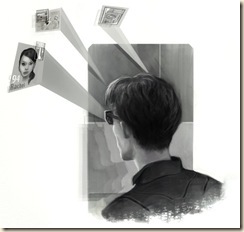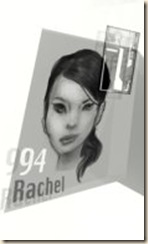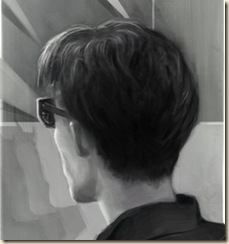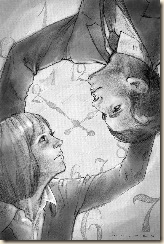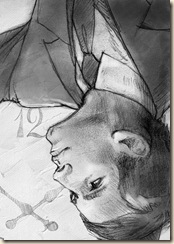One afternoon, ensconced in the posh InterGalactic Medicine Show offices, fellow Assistant Editor Eric James Stone and I fell into a disagreement.
“What genre is Jared Oliver Adams’s Whiteface?” he asked.
I put a dollop of caviar on a slice of baguette while I considered his question. “Historical fantasy. Historical because it presents a culture similar to a primitive culture that might be found on Earth. Fantasy, because even though they are humans, and their culture is analogous of a number of pre-historical societies, they are not factual.”
He mumbled something and fetched some crab dip. He spread it on a Ritz cracker. Plebian, I thought. There are slices of crusty ciabatta right next to the dip. Might as well put it on Goldfish as put it on an abomination like a Ritz cracker.
“It’s sociological science fiction,” he declared at last, crumbs tumbling from his lips, sprinkling his goatee. And the divan I was stretched out upon.
I looked at him. He blinked at me. He did not offer to pick up the crumbs.
I signaled the maid. While she swept up his mess, I asked, “How do you figure it’s science fiction? There’s no science in it.”
“Anthropology is a science. Certainly knowledge of previous cultures plays a part in Whiteface.”
“Anthropology isn’t at the center of the story. Anyway, science fiction has rivets; fantasy has trees. There are trees in Whiteface; there are no rivets. Ergo…”
“That’s simplistic,” Eric James Stone said. With his mouth full of crab dip and crackers. “It’s a what-if story about human culture, and the culture does play a central part of the story.”
“All fiction is a what-if story about human culture,” the maid said.
We stared at her silently until she left.
“All fiction is a what-if story,” I said, resuming the conversation. “It being a what-if story doesn’t make it science fiction. If the beings depicted in Whiteface were described as aliens, then it would be science fiction.”
“The culture is alien.”
"The culture isn’t science.” I took a sip of aqua gassata. “If Otter had made a point of studying other cultures in a kind of…nascent anthropology then maybe you could call Whiteface science fiction because science would be at the heart of the story. But no—instead, the story focuses on the human connections between Otter, his wife, his son, their tribe, and the enemies of the tribe.”
“By that definition, the only science fiction is hard science fiction.”
“By your definition, some Westerns are science fiction. For Pete’s sake, Auel’s Clan of the Cave Bear is science fiction!”
From there, the conversation devolved into fisticuffs. An hour later as I held a nicely aged, perfectly marbled New York strip to my eye, and Eric swallowed mouthfuls of crème brulee to get his adam’s apple back in place, he said slowly,
“I seem to recall you once said that Monster Hunters International is science fiction.”
At least his mouth wasn’t full this time. “Yes,” I said. “Because of the focus on weapons technology and the pseudo-scientific nature of the way Correia’s protagonists approach hunting them.” I neglected to mention that I never actually finished MHI…
“And you think Peter Beagle’s Trinity County, CA is also science fiction.”
“Yes, and for the same reason.”
He shook his head. “You are a moron.”
I threw my New York strip at him.
